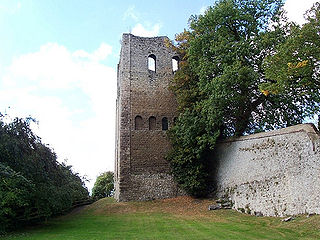
Lahore is the capital and largest city of the Pakistani province of Punjab. It is the second largest city in Pakistan, after Karachi, and 26th largest in the world, with a population of over 13 million. It is located in the north-eastern region of Punjab, along the River Ravi. Lahore is one of Pakistan's major industrial and economic hubs. It has been the historic capital and cultural centre of the wider Punjab region, and is one of Pakistan's most socially liberal, progressive, and cosmopolitan cities.

The Architecture of Lahore reflects the history of Lahore and is remarkable for its variety and uniqueness. There are buildings left from the centuries of rule of the Mughal Empire, the Sikh Empire, as well as from the era of the British Raj, whose style is a mixture of Victorian and Islamic architecture often referred to as Indo-Saracenic. In addition, there are newer buildings which are very modern in their design. Unlike the emphasis on functional architecture in the west, much of Lahore's architecture has always been about making a statement as much as anything else.

Murree is a mountain resort city, located in the Galyat region of the Pir Panjal Range, within the Murree District of Punjab, Pakistan. It forms the outskirts of the Islamabad-Rawalpindi metropolitan area, and is about 30 km (19 mi) northeast of Islamabad. It has average altitude of 2,291 metres (7,516 ft). The British built this town during their rule to escape the scorching heat in the plains of Punjab during the summer.

West Malling is a market town in the Tonbridge and Malling district of Kent, England. It has a population of 2,590.

Sargodha is a city and capital of Sargodha Division, located in Punjab province, Pakistan. It is Pakistan's 12th largest city by population and one of the fastest-growing cities of the country. Sargodha is also known as the City of Eagles.

The Tomb of Anarkali is an octagonal 16th century Mughal monument in Lahore, capital of the Pakistani province of Punjab.

The Lahore Museum is a museum located in Lahore, Punjab, Pakistan. Founded in 1865 at a smaller location and opened in 1894 at its current location on The Mall in Lahore during the British colonial period, Lahore Museum is Pakistan's largest museum, as well as one of its most visited ones.
Shahrah-e-Quaid-e-Azam, formerly known as The Mall or Mall Road, is a major road in Lahore, Pakistan.
Nayyar Ali Dada is a Pakistani architect.

Sir Ganga Ram Hospital is a 550-bed hospital in Lahore, Pakistan. This was the original hospital established by Sir Ganga Ram, a Civil Engineer who served the British government. He established it in Lahore in 1921 during the British Raj, 26 years before the Partition of British India.

The Cathedral Church of the Resurrection, also known as Lahore Cathedral, is a United Protestant cathedral located in Lahore, Pakistan. It was built on The Mall road in 1887, opposite the Lahore High Court.

Sacred Heart Cathedral is the seat of the Roman Catholic Archdiocese of Lahore, located in Lahore, Punjab, Pakistan. Built at the behest of bishop Godefroid Pelckmans with Belgian aid and materials, the cathedral was consecrated by Bishop Fabian Eestermans, the Bishop of Lahore, on 19 November 1907. Its roots lie in the historical presence of the Belgian Capuchins in Pakistan. The design of this Cathedral was made according to the Roman Byzantine-style by Belgian architect, Edouard Dobbeleers of Antwerp.

Lahore Masonic Temple in the Charing Cross neighbourhood of Lahore, Pakistan, is the former home of Prince Albert Victor Lodge 2370ec, and Hope and Perseverance Lodge No. 782, two Masonic lodges warranted by the United Grand Lodge of England.

The culture of Lahori People is a manifestation of the lifestyle, festivals, literature, music, language, politics, cuisine and socio-economic conditions of its people. It is characterised by the blending of South Asian, Middle Eastern, Central Asian and Western influences.

Ferozsons (Pvt) Limited is a Pakistani publishing company in Lahore, Pakistan. Established in 1894, it is Pakistan’s oldest publishing house.
Garhi Shahu is a union council and historic neighbourhood in Gulberg Tehsil of Lahore, Punjab, Pakistan. Garhi Shahu is one of Lahore's oldest residential neighbourhoods outside the Old City and is located near Lahore Junction railway station. Garhi Shahu is home to imposing government buildings like the huge Governor’s House, with colonial-era Indo-Gothic arches and Palladian colonnades, and the 1938 Punjab Assembly. Among modern buildings in te locality, the Alhamra Art Center stages drama and art exhibitions, while Al-Falah Theatre shows popular plays and comedy. Well known hip-hop artist Dawar Mahmood, better known as Mr Dawar, also hails from Garhi Shahu. The area is named after the notorious 19th-century gang leader and robber baron Shahu.
Faletti's Hotel is an old historical hotel in Lahore, Pakistan, which was opened in 1880 during the British Raj by an Italian, Giovanni Faletti. It was closed in the late 1990s for privatisation and re-opened in June 2013 after undergoing major refurbishment.
The following is a timeline of the history of the city of Lahore, Pakistan.













